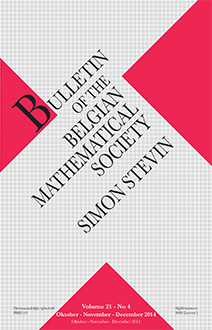Abstract
Suppose that consumers have to classify $n$ items or baskets of goods according to their individual preferences or utility and such that ties are allowed. In this paper we study the number of possible classifications or outcomes $f(n)$. We obtain different representations for $f(n)$ and use singularity analysis to determine the asymptotic behaviour of $f(n)$. We also give a probabilistic interpretation of $f(n)$ and use a renewal argument to study $f(n)$ as $n\rightarrow \infty $. Assuming that each of the $f(n)$ outcomes has equal probability to occur, we study the random variable $N_{n}$ where $N_{n}$ equals the number of most preferred items, i.e. the number of items on the top of the list.
Citation
Edward Omey. Stefan Van Gulck. "On the number of orderings of n items." Bull. Belg. Math. Soc. Simon Stevin 14 (2) 229 - 237, June 2007. https://doi.org/10.36045/bbms/1179839215
Information





